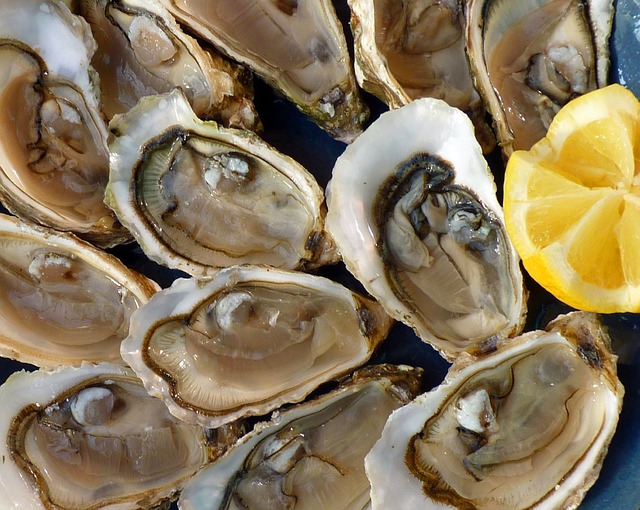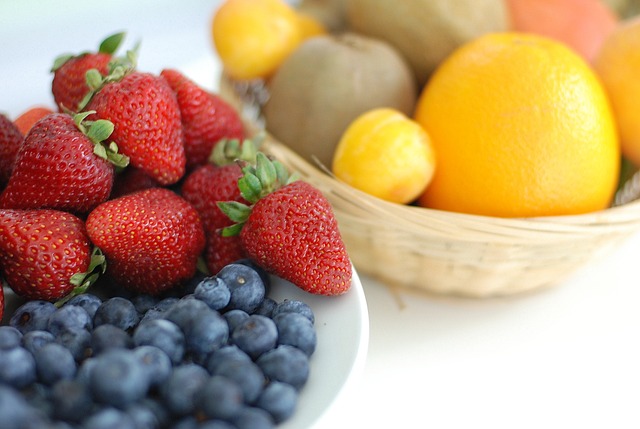Fighting inflammation: turmeric meet your best friend pepper (+ other game changing food combos)
As an integrative dietitian, a common imbalance I often see after a thorough assessment is inflammation.
Inflammation is a normal process, and under “balanced” circumstances it is short lived and mostly beneficial (think: a minor cut on your finger when chopping butternut squash, spoken from recent experience a random idea in my head). Your body sends signals that begin a healing cascade, with inflammatory markers elevating in your system for a short period of time until the stressor has dissipated and all is well. Our immune system is constantly distinguishing between self and non-self, and requires this “balance” to stay in check (thus keeping us healthy). Chronic inflammation happens when things get out of balance – and can be harmful. That signaling mentioned above never shuts off, which can cause chaos in our body and result in a number of different negative health issues or symptoms.
I would like to take a short minute here to explain that all of us have some degree of inflammation occurring in our body most of the time, and that degree of inflammation is highly individualized and depends on many factors (such as environmental exposures and genetics). Inflammation is caused by so many things: infections, sedentary lifestyle, environmental toxins, high glycemic foods, excess caloric intake, stress, stress, stress, processed foods, smoking, intense exercise, lack of sleep, obesity, food allergies/sensitivities, and of course our diets (plus much much more). Left un-checked and mixed in with the right ingredients to create a perfect storm, inflammation is often (most of the time) at the root cause of so many chronic diseases and debilitating symptoms. Diabetes, heart disease, cancer, digestive disorders, autoimmune disease, depression, anxiety, infertility, skin disorders (including eczema), and arthritis, just to name a few, have all been linked to internal inflammation.
I will dive deeper into inflammation, breaking it down bit by bit in future posts, but wanted to leave you with nutritional tools you can use to offset this and create balance, making conscious food choices that will help lead you to an overall state of well-being.
Let’s start with the basics of an anti-inflammatory diet:
- Choose lower glycemic-index foods. What does this mean? Opt for foods that create less of a direct glucose (sugar) hit to your blood. Refined foods like white bread, pastas, white rice, crackers, cookies, chips, sweets, as well as white potatoes, dried fruit, fruit juices are all higher glycemic foods. Choose sweet potatoes with skin, whole fruits, and non-starchy veggies instead. Good lower glycemic veggies include: leafy greens, bell peppers, artichokes, Brussels sprouts, zucchini, mushrooms, onions. To see a full list, visit this site.
- Re-balance fatty acid intake. Get more omega-3 fatty acids (salmon, sardines, flax seed, chia sees, walnuts, fresh basil and dried oregano) and less omega-6 fatty acids (processed foods, corn oil, sunflower oil, canola oil). I get the question all the time- I thought omega-6’s are healthy? My answer is this- In and of themselves, omega-6 fatty acids are not the problem, the pro-inflammatory “happenings” occur because we get too much. With our standard diet, omega-6 is in uber-abundance in our available foods supply (veggie oils, nuts/seeds, processed foods, etc). Also, because they are cheap (and highly unstable I might add….), these oils are used in the preparation of most restaurant meals and processed foods. Therefore, we do not have a problem getting “enough” of this essential fatty acid, and the ideal balance of omega-3 to omega-6 gets extremely whacky, with the omega-6 intake taking off and omega-3’s falling more and more behind. Our ratio is falls ideally somewhere 2-4:1 omega-6:omega-3. (I have read that the average American intake is actually closer to 17-40:1). This causes inflammation. We will never fully get rid of omega-6 intake, nor should we, but an anti-inflammatory diet does focus on replacing some omega-6 foods with omega-3’s, as well as MUFA’s (monounsaturated fatty acids such as olive oil).
- Speaking of fats, take a look at your quantity and quality of this macronutrient. In my practice, I do an extensive intake and observation of where my clients are getting dietary fats, and almost always find ways to shift into an overall healthier balance. The amount differs person to person (but know that too low is a problem I see often). Try limiting saturated fats (such as milk, cheese, yogurt, butter) and red meat overall, and when you do eat these foods focus on organic and grass-fed (which results in a more optimal fatty acid profile). Limit intake of processed vegetable oils as listed above, and avoid trans fats at all costs.
- Include foods high in polyphenols. Yay! Something to get more of (aren’t we always taking away? :)). Ever heard of the importance of “eating the rainbow?” This is where that comes into play. Polyphenols are phytochemicals that are abundant in plant based foods and boast a high anti-oxidant profile. Some top contenders are green + black teas, berries, dark chocolate, citrus fruits, herbs/spices, legumes and nuts + seeds. This site is great to learn more about polyphenols and their content in foods. *Also important to frequently consume a variety of phytonutrients (as in every day), as they are utilized quickly by our body and depleted from our blood and tissues at a rapid pace.
- Consume cruciferous veggies daily. Eat more broccoli, kale, Brussels sprouts, cauliflower, bok choy, arugula and cabbage. These foods have specific components that are linked to lower amounts circulating inflammatory markers including interluekin-6, tumor necrosis factor, and interluekin 1b.
- Optimize gut health. Guys, I could go on forever here. But I will save you this topic for a later date. Just know that gut (digestive) health is E V E R Y T H I N G. Make it a priority to find a way to ensure your digestive system is functioning at optimal capacity, including eating plenty of fiber (I go beyond the 25-35 gram per day with my recommendations), probiotic and pre-biotic rich foods. Consider supplementing with a good quality probiotic as well. As with anything, consult your MD before jumping all in.
- Take a gander at your caffeine and alcohol intake. Consider reducing it a bit. Caffeine and alcohol and their respective impact on our health is, yet again, highly individualized. It’s a metabolism and genetic thing, as well as dosage dependent. So play around with reducing your intake if inflammation is an issue for you.
- Limit processed and fast foods, and try to keep things real (organic, whole foods!).
- Include lots of fresh herbs/spices. This is often one of the easiest yet hardest things to do. Once we finally get to plate our beautiful meals, the last thing we want to do is chop up some cilantro to throw in the mix. But do it! It goes above and beyond just the added flavor punch. My favorites include: turmeric, curry, basil, cilantro, cayenne, paprika, parsley, black pepper, garlic and rosemary.
- Consider potential food allergies/sensitivities. When all else seems to provide little to no help, there may be a deeper rooted issue even beyond inflammation going on in your body. It is common for food sensitivities to occur at any phase of life, even with foods you have been eating for years and seem to tolerate fine. I see this in my practice a lot. Even if a food is “healthy,” it does not mean it is “healthy” for you. If your body reacts negatively (likely related to gut impermeability – again I will save this for a later date), eating it over and over again is only going to add fuel to the fire, and could potentially further compound your health problems. Gluten and dairy are top problem-causing foods, but there can be a number of other issues here as well. Elimination diets work well if food sensitivity testing is not available. The good news is that inflammation is often “cooled down” significantly once an identified trigger has been removed. (I can help you work through this if you need assistance!).
Okay now on to the fun stuff! Winning food combos for the biggest anti-inflammatory benefit!
- I am going to start with my favorite! Turmeric + black pepper. Most of us have heard by now the million benefits from consuming the spice/root turmeric. It seriously is as amazing as it sounds. It has a wide history in cuisines around the world, as well as a medicinal usage. Cooking foods such as carrots or sweet potatoes with turmeric has been shown to retain more of the beta-carotene found in those foods. Finally, add a pinch of black pepper to any dish you add turmeric to, as this simple tip will increase the absorption of turmeric 2000%! Isn’t it amazing that most traditional dishes naturally pair these two spices?!
- My next favorite is spinach + grass-fed ghee or olive oil. You can sub any leafy green for spinach, but in order to absorb some of those amazing vitamins and minerals that make these veggies so anti-inflammatory we need fat. Spinach is a good source of vitamin E and K, both of which are fat soluble (plus much more!). We already discussed the importance of olive oil and other healthy fats.
- Oysters + lemon juice or lemon zest. This two foods provide stand alone amazing inflammation-zapping benefits. Seafood like oysters and sardines are also a good source of iron, and iron-deficiency can trigger inflammation, so boosting your intake of iron rich foods (especially for my ladies!) is wonderful. Vitamin C increases heme iron absorption, which is where the lemon joins the party! (Did you know the zest of citrus fruits is FULL of health components?!) Think about this next time you are next to the sea enjoying fresh oysters and they provide a fresh lemon as a condiment! A girl can dream… (For my fellow Oklahoman’s – canned will do :))

- Blueberries + walnuts + cinnamon. Now if this does not sound delicious you should just stop. Beautiful, tasty and as healthy as it can be right here. If you tolerate dairy, full-fat organic plain yogurt would be delicious with this trio added to the top. Don’t tolerate dairy? Coconut milk yogurt would be just as yummy. Blueberries are a great source of fiber and of course high in polyphenols, and walnuts are a good source of fatty acids. Cinnamon is anti-microbial and can play a role in blood sugar regulation.
- Brussels sprouts + red chili flakes. Say what?? Brussels sprouts, as mentioned above, are in the cruciferous family, which have been shown to reduce circulating inflammatory markers in the blood. Red chili pepper is a spice that inhibits something called Nuclear Factor Kappa Beta, which up-regulates inflammatory response. Some anti-inflammatory medications are actually used to depress this response. Roast halved Brussels sprouts in the oven after covering with melted grass-fed ghee and sprinkling salt, pepper, and red chili flakes.
- Dark chocolate + pomegranate seeds. Okay I may have lost people with the above recommendation, but I have surely redeemed you here. Indulge that sweet tooth in the healthiest way imaginable by pinching off a square of at least 70% cocoa dark chocolate and enjoying with a handful of pomegranate seeds. I believe in purchasing fair trade and organic dark chocolate, as conventional cocoa beans tend to be laden with pesticides. Dark chocolate is beneficial for heart disease among many other inflammatory conditions. Pomegranate seeds are a good source of ellagic acid, which is also anti-inflammatory. Both chocolate and pomegranate seeds are on the list of Nuclear Factor Kappa Beta inhibitors, as red chili pepper listed above.
- Apple + pumpkin seeds. Apple is a great source of fiber (truly can keep the doctor away) and pumpkin seeds are high in magnesium. Magnesium is an important component of a healthy anti-inflammatory diet. Slice an apple (or can sub a pear) and put it on a salad with a handful of pumpkin seeds for variety and added crunch! Or make a delicious pumpkin seed butter and add that to an apple for a delicious mid-afternoon snack.
Hopefully you have some inspiration to include some bright and flavorful foods to your plate this week, all in the name of {anti} inflammation. Be on the lookout for future posts diving deeper into this and many more topics involving various body imbalances. To find out more about your personal inflammatory history and potentially work together to find optimal health, email or call me!





